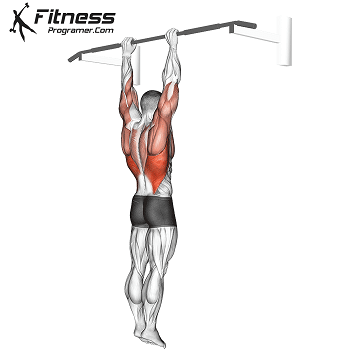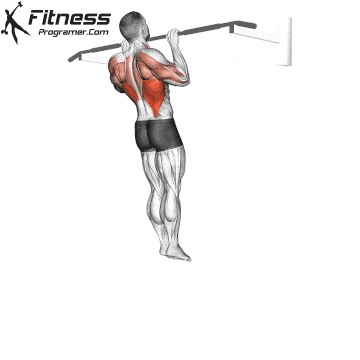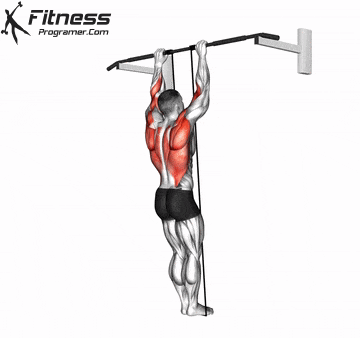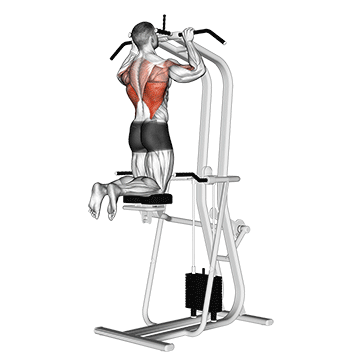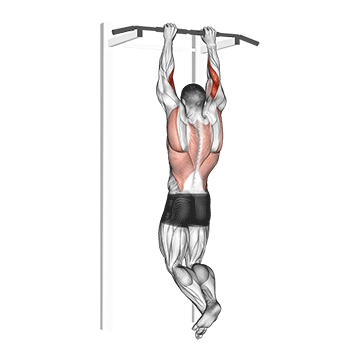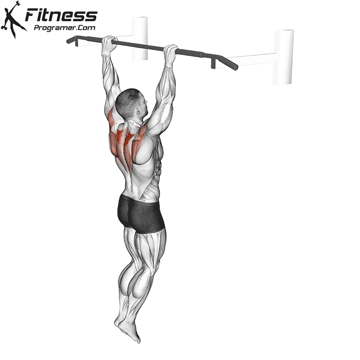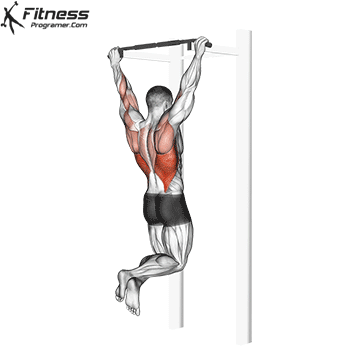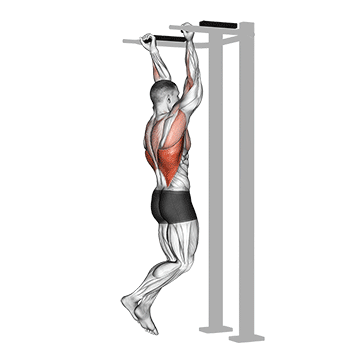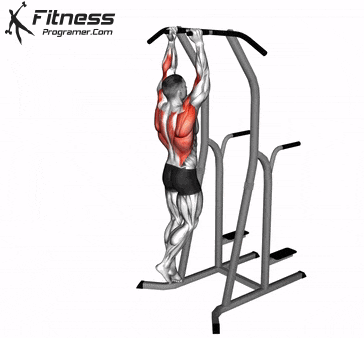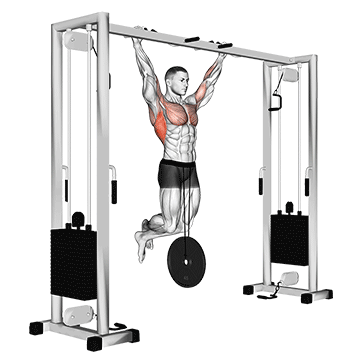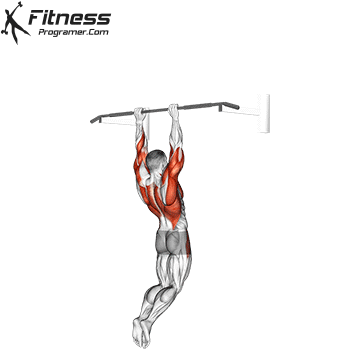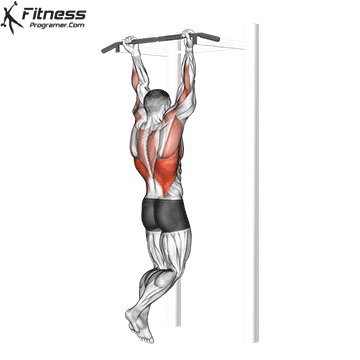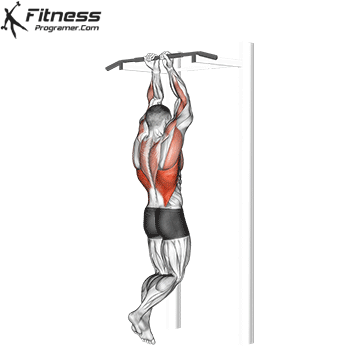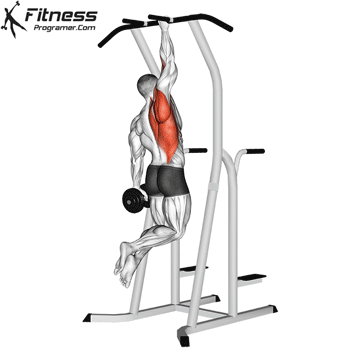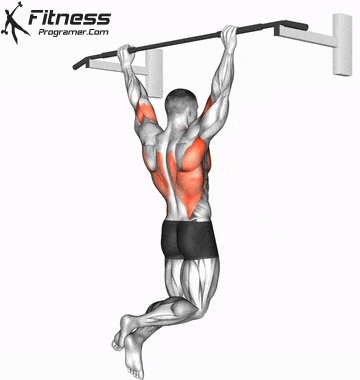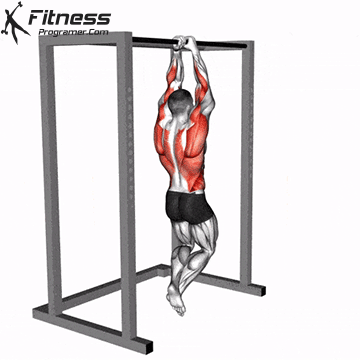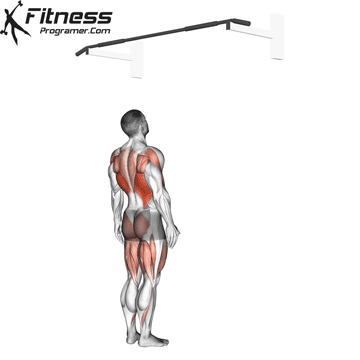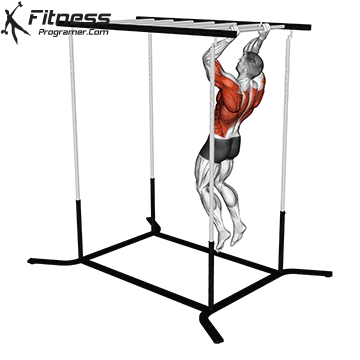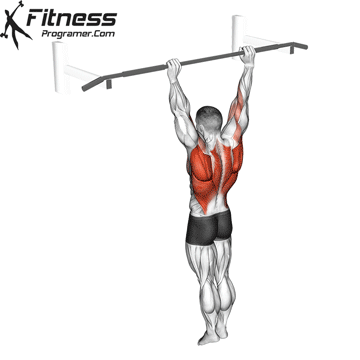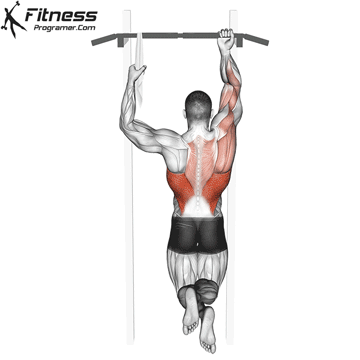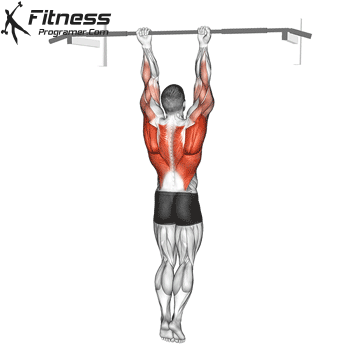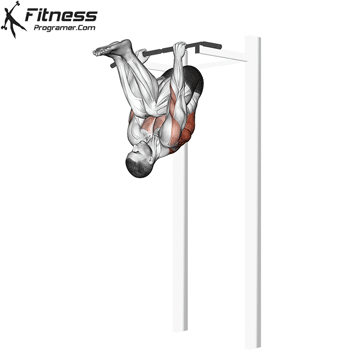Overview
The eccentric pull-up (also called a negative pull-up) isolates the lowering phase of the pull-up movement. Rather than pulling up, you start at the top with your chin above the bar and slowly lower yourself down. This controlled descent targets the latissimus dorsi, biceps, rhomboids, and core muscles, improving strength and joint stability through a full range of motion.
How to perform Eccentric Pull-Up
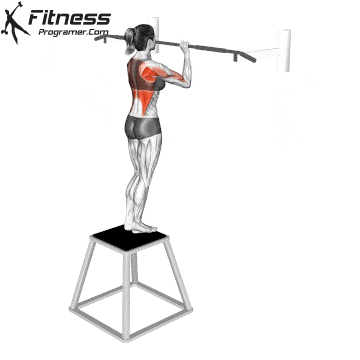
Use a box or jump to get into the top pull-up position (chin above the bar).
Engage your core and scapular stabilizers.
Slowly lower your body in a straight line, taking 3–8 seconds to reach full arm extension.
Control the descent without dropping or swinging.
Step back up and repeat for the desired reps.
Tips for Proper Form
Keep your core braced to prevent swinging or arching.
Lower slowly for maximum muscle engagement (aim for 5–8 seconds).
Engage your back and arms throughout the descent.
Avoid locking the elbows suddenly at the bottom.
Use a box or bench for consistent height and safety.
Common Mistakes
Rushing the descent, which reduces effectiveness.
Letting the body swing, losing muscle tension and control.
Not engaging the scapula, leading to poor shoulder mechanics.
Dropping abruptly, risking injury or joint strain.
Skipping proper rest between reps, leading to form breakdown.
Benefits of the Eccentric Pull-Up
Builds Pull-Up Strength: Strengthens the muscles involved in a full pull-up, even if you cannot yet pull yourself up.
Increases Time Under Tension: The slow descent enhances muscle activation for hypertrophy.
Improves Control and Stability: Reinforces proper scapular and core engagement throughout the movement.
Supports Progression Toward Full Pull-Ups: Helps beginners bridge the gap to unassisted pull-ups.
Reduces Joint Impact Compared to Full Reps: Allows focus on technique and control without heavy dynamic strain.
Targets the Lats, Biceps, and Rhomboids: Builds upper body pulling strength with high eccentric load.
Great for Rehab and Joint Conditioning: When programmed correctly, can enhance tendon resilience and joint health.
How to Incorporate Into Your Routine
- For Beginners: Perform 3 sets of 3–5 reps, focusing on slow descents (5–8 seconds) with assistance if needed.
- For Hypertrophy: Use 3–4 sets of 6–8 reps with 5-second descents and minimal rest between reps.
- For Strength: Try 4 sets of 3–5 reps using weighted eccentric lowers or longer holds at top and bottom positions.
- For Functional Training: Combine with isometric holds and scapular pull-ups to improve pulling control.
- For Circuit Training: Pair with core work or push movements in supersets.
- For General Fitness: Include in upper-body sessions as a prep drill or accessory lift.
- For Calisthenics Progression: Use alongside band-assisted pull-ups, isometric holds, and negatives to build toward full reps.
Eccentric Pull-Up Muscles Worked
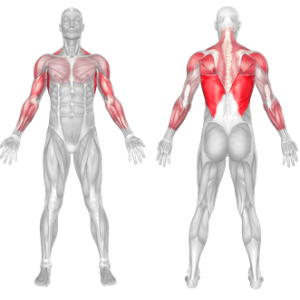
Other Pull-Up Variations
Frequently Asked Questions
Can eccentric pull-ups help me do regular pull-ups?
Yes. Eccentrics build the necessary strength to progress to full pull-ups.
How long should I lower down?
Aim for 3–8 seconds, depending on your training goal.
Should I do eccentric pull-ups every day?
No. Give your muscles 48 hours to recover, especially if you’re training to failure.
Is this safe for beginners?
Yes, but start with 2–3 reps per set and use a box for control.
What if I drop too quickly?
Use a shorter descent range or get help from bands until you can control your bodyweight.

